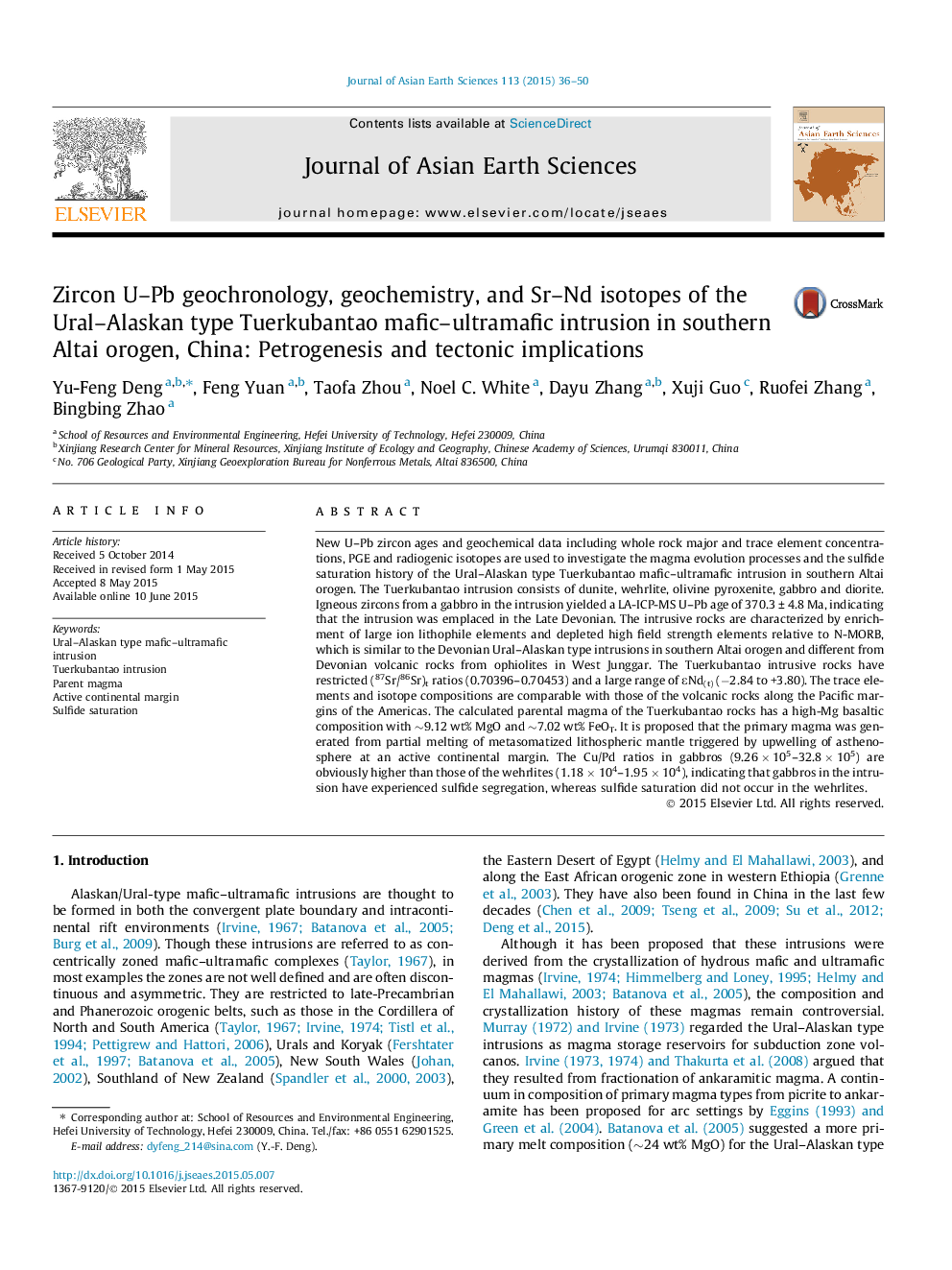| Article ID | Journal | Published Year | Pages | File Type |
|---|---|---|---|---|
| 4730213 | Journal of Asian Earth Sciences | 2015 | 15 Pages |
•The Tuerkubantao intrusion was formed in the Late Devonian.•Its parent magma is a high-Mg basaltic magma with ∼9.12 wt% MgO and ∼7.02 wt% FeOT.•The primary magma was derived from a metasomatized mantle in a forearc setting.•Sulfide saturation occurred in gabbros but did not occur in the wehrlites.
New U–Pb zircon ages and geochemical data including whole rock major and trace element concentrations, PGE and radiogenic isotopes are used to investigate the magma evolution processes and the sulfide saturation history of the Ural–Alaskan type Tuerkubantao mafic–ultramafic intrusion in southern Altai orogen. The Tuerkubantao intrusion consists of dunite, wehrlite, olivine pyroxenite, gabbro and diorite. Igneous zircons from a gabbro in the intrusion yielded a LA-ICP-MS U–Pb age of 370.3 ± 4.8 Ma, indicating that the intrusion was emplaced in the Late Devonian. The intrusive rocks are characterized by enrichment of large ion lithophile elements and depleted high field strength elements relative to N-MORB, which is similar to the Devonian Ural–Alaskan type intrusions in southern Altai orogen and different from Devonian volcanic rocks from ophiolites in West Junggar. The Tuerkubantao intrusive rocks have restricted (87Sr/86Sr)t ratios (0.70396–0.70453) and a large range of εNd(t) (−2.84 to +3.80). The trace elements and isotope compositions are comparable with those of the volcanic rocks along the Pacific margins of the Americas. The calculated parental magma of the Tuerkubantao rocks has a high-Mg basaltic composition with ∼9.12 wt% MgO and ∼7.02 wt% FeOT. It is proposed that the primary magma was generated from partial melting of metasomatized lithospheric mantle triggered by upwelling of asthenosphere at an active continental margin. The Cu/Pd ratios in gabbros (9.26 × 105–32.8 × 105) are obviously higher than those of the wehrlites (1.18 × 104–1.95 × 104), indicating that gabbros in the intrusion have experienced sulfide segregation, whereas sulfide saturation did not occur in the wehrlites.
Graphical abstractFigure optionsDownload full-size imageDownload as PowerPoint slide
